2020 Toyota Prius AWD-e Tires, Repair & Service
Get Started
Complete Auto Care for Your 2020 Toyota Prius AWD-e
-
TIRES FOR YOUR 2020 Toyota Prius AWD-e View Tire Info GET TIRE PRICING
-
REPAIR FOR YOUR 2020 Toyota Prius AWD-e View Repair Info SCHEDULE REPAIR
-
MAINTENANCE FOR YOUR 2020 Toyota Prius AWD-e View Maintenance Info SCHEDULE MAINTENANCE
-
OFFERS FOR YOUR 2020 Toyota Prius AWD-e Limited Time Tire Offers VIEW ALL COUPONS
2020 Toyota Prius AWD-e Tires
Recommended Tires | Tire Information
2020 Toyota Prius AWD-e Tires Sizes, Speed Ratings, and Inflation
Not sure about your 2020 Toyota Prius AWD-e tire size? Use the following chart to find information on tire size, speed rating, and inflation.
| Trim Level | Speed Rating | Inflation in PSI F/R | Tire Size |
|---|---|---|---|
| 2020 Toyota Prius AWD-e LE | S | 36 PSI/35 PSI | 195/65R15 |
| 2020 Toyota Prius AWD-e XLE | S | 36 PSI/35 PSI | 195/65R15 |
|
2020 Toyota Prius AWD-e LE Speed Rating: S Inflation F/R: 36 PSI/35 PSI |
|
2020 Toyota Prius AWD-e XLE Speed Rating: S Inflation F/R: 36 PSI/35 PSI |
* Note: these models have different tire sizes depending on vehicle options.
Recommended Tires for Your 2020 Toyota Prius AWD-e
What tires are best for a 2020 Toyota Prius AWD-e? Check out the following tire brands and types.
 Blizzak WS90
Blizzak WS90
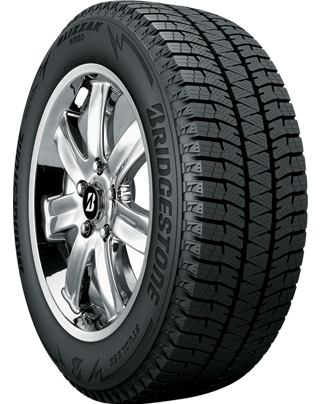
- No warranty
- Winter
- Winter
 Ecopia EP422 Plus
Ecopia EP422 Plus
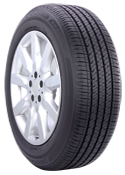
- Platinum Pact Limited Warranty
- All-Season
- Performance
 Turanza QUIETTRACK
Turanza QUIETTRACK
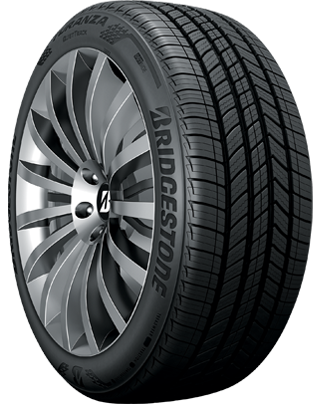
- No warranty
- All-Season
- Performance
 WEATHERPEAK
WEATHERPEAK
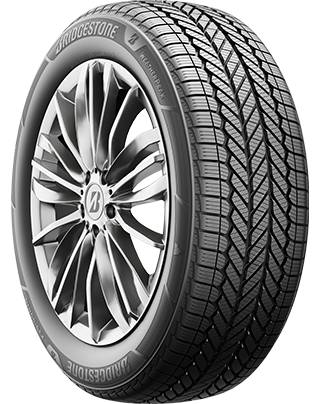
- Platinum Pact Limited Warranty
- All-Season
- Passenger Tires
 ALL SEASON
ALL SEASON
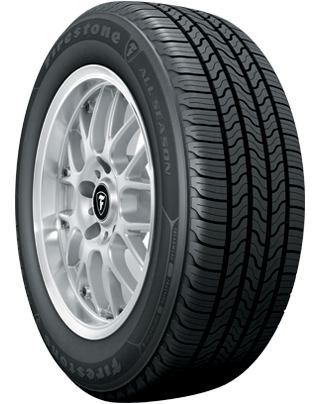
- No warranty
- All-Season
- Passenger Tires
 FT140
FT140
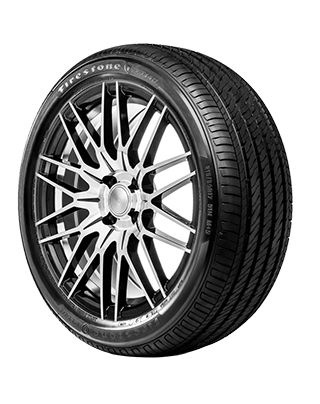
- No warranty
- All-Season
- Passenger Tires
 WEATHERGRIP
WEATHERGRIP
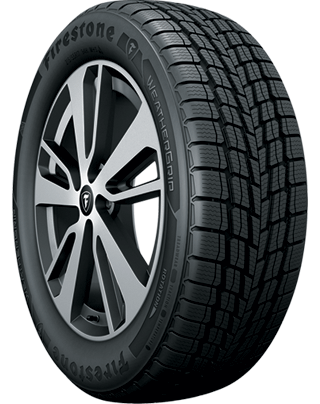
- No warranty
- All-Season
- Passenger Tires
 Winterforce 2
Winterforce 2
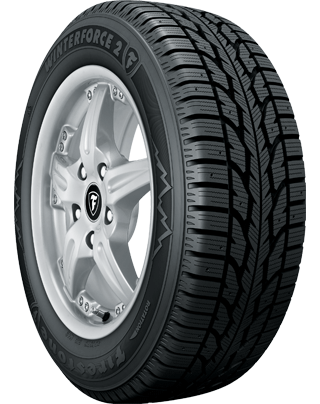
- No warranty
- Winter
- Winter
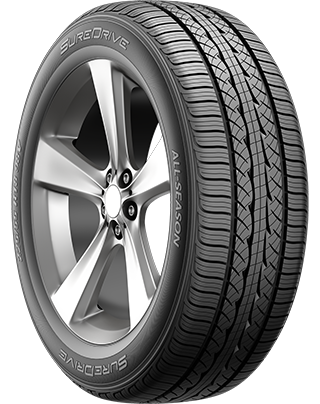
- No warranty
- All-Season
- Passenger Tires
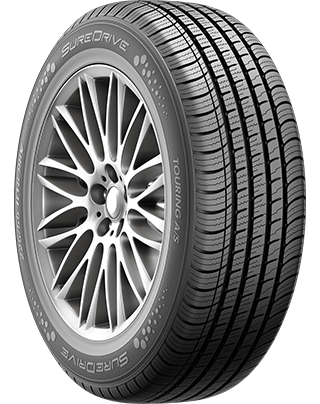
- No warranty
- All-Season
- Passenger Tires
 Extensa A/S II
Extensa A/S II
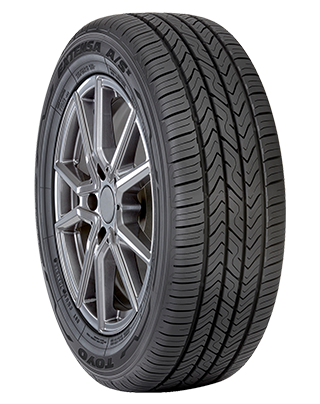
- No warranty
- All-Season
- Passenger Tires
2020 Toyota Prius AWD-e Tire Information
Apart from finding the right tire size, you also want to consider a handful of other factors when buying new Toyota Prius AWD-e tires like where and how you drive, and what tire brand you trust most. When evaluating your driving conditions, think about where you live (countryside vs. city vs. mountains) and the kind of unexpected weather you're likely to experience. Many drivers who live in states that experience all four seasons choose to purchase two sets of tires: one for winter and one for summer. Other drivers buy one set of all-season tires instead. That way they don't have to return to the tire shop and their vehicle is always ready for sun, rain, and light snow!
Next, consider your driving style. If you're an avid off-roader who yearns to pioneer new paths, you have very different tire needs than a highway commuter who doesn't hit the hills very often. Talk to a tire technician at Firestone Complete Auto Care for help choosing the best tire for you, or start shopping for Toyota Prius AWD-e tires online.
2020 Toyota Prius AWD-e Tire Installation & Rotation
Firestone Complete Auto Care has been a leading tire provider for more than a century. We're your one-stop shop for tire installation, rotation, and ongoing maintenance! Shop 2020 Toyota Prius AWD-e tires online and schedule an installation appointment.
2020 Toyota Prius AWD-e Tire Questions
-
Why check Toyota tire inflation? The right tire pressure can make all the difference. Proper tire inflation helps increase fuel economy, improve braking time, and boost tire lifespan! Even a small change in tire pressure can impact your driving.
-
What do the tire sidewall numbers mean for my Toyota Prius AWD-e? Your tire sidewall numbers tell you the recommended load carrying capacity, speed rating, treadwear, traction, and tire size. Talk to a tire technician to learn how to read Toyota tire numbers.
-
Is there an easy way to check Toyota tire tread depth? Stay on top of your tire tread depth to help avoid a dangerous drive. You can check tread depth with a penny. Hold the penny so that Abraham Lincoln is facing you, then place your penny into a tread groove upside down. If you can see the top of Abe’s head, your tread is shallow and it might be time for new Toyota Prius AWD-e tires. Grab a penny. Hold the so that Abe Lincon's head is facing you and his hair is pointing toward the ground. Then, place the penny into a tread groove. If you can see the top of Abe’s head, your tread is shallow and it might be time for new Toyota Prius AWD-e tires.
Types of 2020 Toyota Prius AWD-e Repairs
When to repair, when to replace? Click on a repair below to learn more about Toyota Prius AWD-e repairs at Firestone Complete Auto Care.
2020 Toyota Prius AWD-e Repair Information
No driver looks forward to car repairs. But we work to provide you with a different experience at Firestone Complete Auto Care. Bring your 2020 Toyota Prius AWD-e in for repair services and our skilled repair technicians will get your Prius AWD-e back on the road. We’ll start by assessing what repairs may be needed, and we’ll provide you with a detailed explanation of what we recommend. We value your trust, so we recommend only the repairs we think are necessary for your safety on the road.
How Much Are Toyota Prius AWD-e Repairs?
The cost to repair your 2020 Toyota Prius AWD-e depends on what kind of repair you need, the cost of any replacement parts, the amount of labor necessary to get the job done, and where you live. No matter what state you’re in, be sure to look through our offers and online coupons for repairs.
A few different aspects can influence repair costs for your 2020 Toyota Prius AWD-e, like
Questions About 2020 Toyota Prius AWD-e Auto Repairs
-
Do I still need scheduled maintenance even when nothing is wrong with my Toyota? The cheapest 2020 Toyota Prius AWD-e repair is the one that isn’t necessary in the first place! Staying up-to-date with your car’s scheduled maintenance services is a great way to keep future repair costs low.
-
What does it mean to be 'in tune' with your car? No, we’re not talking about finding the best jams on the radio! You know your car best, and you’re the first person who will notice if something doesn’t feel right (like new smells, sights, or sounds coming from your car). If you sense that something is 'off,' stop in for a Courtesy Check to have these symptoms checked out ASAP. Early action could help you prevent Toyota Prius AWD-e repairs.
-
Do I have to get the repairs you recommend for my Toyota? Talk to your technician. We'll never recommend a service or repair for your 2020 Toyota Prius AWD-e that we don't think is necessary for your safety.
2020 Toyota Prius AWD-e Brake Repair
Your Toyota Prius AWD-e engine may be strong and reliable. But if you can’t stop it, it’s as good as scrap metal. If you notice your brakes are squeaking or not working well, don’t wait! Unresponsive brakes make it tough to give the road your best. Plus, waiting can lead to more expensive parts wearing out and requiring replacement. Go to your local Firestone Complete Auto Care for 2020 Toyota Prius AWD-e brake repairs. Our brake repair services include brake pad/shoe removal and replacement, rotor/drum resurfacing, brake fluid exchange/bleeding, and wheel cylinder and brake caliper installation.
Questions About Your Toyota Prius AWD-e Brakes
-
Why is my Prius AWD-e shaking as I brake? If your Prius AWD-e shakes when you brake, you could be dealing with warped rotors, faulty brake calipers, worn brake pads or rotors, or loose or worn suspension parts. Schedule a free brake inspection at Firestone Complete Auto Care for help diagnosing your brake issue.
-
How long should my Prius AWD-e brake pads last? You can usually get around 30,000 to 40,000 miles out of your brake pads, but how and where you drive your Prius AWD-e can affect this. Hauling large loads or riding your brakes can shorten their lifespan, while smoothly braking and mostly sticking to highways can help your brake pads last longer.
-
Can brake fluid leak when my Prius AWD-e is off? Because your Prius AWD-e brake system is a closed hydraulic system, it should not leak brake fluid. However, if components in your brake system have worn out or been damaged, it might cause brake fluid to leak.
2020 Toyota Prius AWD-e Drivetrain Repairs
Drivetrains for front, rear, and all-wheel-drive and 4WD vehicles are quite different, so you don't want to go to just anyone for drivetrain repair. You want to visit Firestone Complete Auto Care. We can take care of most 2020 Toyota Prius AWD-e drivetrain components Your Toyota Prius AWD-e may need driveshaft attention if you feel clunks when shifting, vibration as your vehicle accelerates, resistance when turning, or heavy vibrations in your floorboards.
Questions About 2020 Toyota Prius AWD-e
-
What are the symptoms of a damaged Toyota drivetrain system? Your Toyota Prius AWD-e drivetrain might be damaged if you notice strange noises from the rear of your vehicle, see fluid leaking, or have issues turning.
-
What causes a Prius AWD-e’s malfunction indicator light (MIL) to illuminate? If your Prius AWD-e has its malfunction warning light (more commonly called the check engine light) illuminated, it could indicate engine troubles, problems with the transmission, electrical issues, malfunctioning sensors, connector problems, or misfire issues.
-
How serious is a drivetrain malfunction in my Prius AWD-e? If your Prius AWD-e has a drivetrain malfunction, don't wait. Get it checked out by a professional mechanic. Identifying the underlying cause and performing the appropriate repairs right away can help prevent further damage and avoid unsafe driving conditions.
Wheel Alignment for 2020 Toyota Prius AWD-e
Alignment services involve precise adjustments to your Toyota Prius AWD-e’s suspension system, the connection between the vehicle and the wheels. In an alignment service, calculated changes are made to the angles of your tires. This is so that your tires hit the road at an optimal angle for your vehicle’s performance — just as Toyota intended. Bring your 2020 Toyota Prius AWD-e in for a wheel alignment and we'll start with an alignment check. After that, we can adjust your wheel alignment angles until they match Toyota’s recommended measurements.
Answers to Toyota Prius AWD-e Alignment Questions
-
What can knock my Toyota Prius AWD-e out of alignment? When it’s safe to do so, avoid driving over potholes or hitting curbs. These road obstacles can wreak havoc on your wheel alignment, as can wear and tear from rough road conditions.
-
How often does your Prius AWD-e need a wheel alignment? It’s usually suggested you check your alignment about every 6,000 miles or 6 months (whichever occurs first). Still, you should reference your Prius AWD-e owner’s manual for Toyota's recommended interval.
-
Do you need to get your Prius AWD-e wheels aligned when you get new tires? While you don’t necessarily need to get an alignment when putting new tires on your Prius AWD-e, it’s still a good idea. Ensuring your wheels are properly aligned can help support optimal handling, tire wear, and fuel efficiency.
Engine Repairs for Your 2020 Toyota Prius AWD-e
If your 2020 Toyota Prius AWD-e needs engine repair, our technicians will provide you with a thorough explanation beforehand. We make recommendations, but you make the final decision. If a service can wait, we’ll make sure you know. We'll also tell you if it's necessary for your safety. We seek to give you all the info you need to make a smart decision about our services. Turn to Firestone Complete Auto Care for your 2020 Prius AWD-e engine repairs and you can feel confident knowing that we use Toyota-approved parts and components like the serpentine belt, valve guide seal, fuses, or other parts.
Engine Q&A 2020 Toyota Prius AWD-e
-
Why does my Prius AWD-e’s check engine light come on when I start it? It’s usually normal for your check engine light to turn on upon ignition. This is just your Prius AWD-e testing its circuits. The dash light shouldn't stay on. If it does, you might want to bring your vehicle in for service.
-
Are Toyota Prius AWD-e engine noises bad? Strange engine sounds can be a sign something’s off in your Toyota Prius AWD-e. Knocking or tapping could be a symptom of low oil. A high-pitched whistle could signal an intake leak or misaligned belt. Squealing can be traced back to a loose fan belt, and grinding might be a sign of brake problems rather than engine issues.
-
What could damage a Toyota engine? Certain driving habits can hurt your engine. These habits include driving on an empty fuel tank, revving your engine while the vehicle is in Park, or slamming the gas pedal while the engine is still cold. Steer clear of these habits to help protect engine performance and efficiency.
Get Your Toyota Prius AWD-e Tire Repaired
If your 2020 Toyota Prius AWD-e is in need of a tire inspection or possible flat tire repair, Firestone Complete Auto Care has your back. There’s a chance your tire could be plugged and patched (rather than replaced). Our technicians can inspect your tire and let you know if it is safe to repair. We’ll begin by taking a look at where the damage is, the type and extent of the tire damage, and how all of your tires are wearing.
If we determine that your 2020 Toyota Prius AWD-e tire can be safely repaired, the repair process is actually fairly simple: (1) Remove the tire from the wheel for inspection and repair, (2) fill the puncture to keep the moisture out, and (3) re-seal the inside lining of your tire so that air won’t escape.
Toyota Prius AWD-e Tire Repair Questions
-
Can I drive my Toyota on a flat tire? Driving on a flat tire is not a good idea. Your Prius AWD-e engine will keep running with a flat tire, but you could damage your wheel by continuing to drive on a flat.
-
Can I use an emergency/temporary sealant to fix my Toyota's flat tire? Fast fixes are a mixed blessing. They’ll help you get your Toyota Prius AWD-e to Firestone Complete Auto Care, but don’t count on them to keep you on the road for very long. Using a temporary sealant may also void a Bridgestone or Firestone tire warranty.
-
What can cause Prius AWD-e tires to keep losing air? Possible reasons for your Prius AWD-e tires continuously losing air include a leaking valve steam, wheel damage, and a puncture or hole in the rubber.
Maintenance for Your 2020 Toyota Prius AWD-e
You want your Toyota Prius AWD-e to last as long as possible. If you put in the effort to keep up with proper maintenance, you could hit 200,000 miles (or beyond!) in your Prius AWD-e.
2020 Toyota Prius AWD-e Maintenance Schedule
What is the manufacturer recommended maintenance schedule for a 2020 Toyota Prius AWD-e? Find maintenance info for your vehicle.
2020 Toyota Prius AWD-e Maintenance Information
There's no need to guess when it's time to get Prius AWD-e maintenance, and no need to wait until something goes wrong. Just follow your 2020 Toyota Prius AWD-e maintenance schedule! This recommended maintenance schedule is written by the auto manufacturer, Toyota themselves. Scheduled maintenance services can vary depending on driving conditions, climate, and other factors; however, there’s a good chance that your vehicle’s recommended maintenance services will include tire rotations, vital fluid checks/exchanges, filter changes, brake pad replacement, and oil changes. Staying on track with routine service appointments can help your Prius AWD-e perform better, increase your vehicle safety, and prevent common 2020 Toyota Prius AWD-e problems.
Overview of Essential Toyota Prius AWD-e Maintenance Needs
Bring your 2020 Toyota Prius AWD-e to Firestone Complete Auto Care for factory-recommended maintenance services and an expert technician will begin by performing a Courtesy Check. A Courtesy Check helps "set the stage" for your service and catch any small problems before they turn into big repairs. Each Courtesy Check includes a free battery test and an inspection of your Prius AWD-e's windshield wiper blades, head and tail lights, filters, fluid levels, tires, and alignment.
Firestone Complete Auto Care is your one-stop shop for 2020 Toyota Prius AWD-e maintenance and repairs. We can help you keep your vehicle (and your life!) running smoothly. Many of our locations have weekend and evening hours for your convenience.
2020 Toyota Prius AWD-e Maintenance Q&A
-
What should I do after hitting a pothole in my Toyota Prius AWD-e? Check your car for pothole damage! If you’ve recently hit a pothole (or even if you don’t remember hitting one… they can be sneaky!) check your tire treads, tire sidewalls, and wheels for damage. Potholes can also knock your car out of alignment, so have your alignment checked if you suspect you’ve driven over a rough patch of road lately.
-
When does my Toyota Prius AWD-e need high mileage oil? If your Toyota Prius AWD-e has ticked past 75,000 miles, consider switching to high mileage oil at your next oil change to give your engine what it needs to go another 75,000 (or more!). High mileage oil: make it a high priority!
-
Can I ignore dashboard lights on my Toyota? Don't ignore dashboard warning lights! Bring your Toyota Prius AWD-e in for a diagnostic code scan as soon as a dashboard warning light flashes on, whether it's your check engine or battery light. Dashboard lights alert you to trouble under the hood.
The Right Battery Size for a 2020 Toyota Prius AWD-e
Need more info about Toyota Prius AWD-e batteries?
| Battery | Engine | Warranty | Cold Cranking Amps | |
|---|---|---|---|---|
| H4 | L4/1.8L | Replacement 36 months | Performance months | 480 |
Car Batteries for 2020 Toyota Prius AWD-e
Generally, car batteries last from three to five years. You want to replace your 2020 Toyota Prius AWD-e battery before it fails and leaves you stranded. Pay attention to clues that your battery is on its way out. A slow engine crank, a blinking battery or check engine light, swollen battery case, corrosion-covered posts, or dim headlights can all signal that your battery is on its last leg.
Plus, at Firestone Complete Auto Care, we’ll test your battery for free. Stop by for a free battery test and, if needed, get your Toyota Prius AWD-e a replacement battery. Automotive batteries are just one of our many areas of expertise. Our technicians are well-acquainted with Toyota’s service specs for Prius AWD-e car batteries’ reserve capacities and cold cranking amps. Get help choosing the battery size that fits your car perfectly, and schedule an appointment today for a quick car battery replacement.
Commonly Asked Toyota Prius AWD-e Battery Questions
-
Why doesn’t my Toyota Prius AWD-e battery stay charged? A battery is in its final hour when it will no longer hold a charge. The battery may be too old. Or, you may have been leaving your car doors ajar and the cabin light at night. Stop by for a complimentary battery check at your favorite Firestone Complete Auto Care and get a handle on your car battery’s health.
-
How long can I expect my car battery to last? A car battery normally lasts three to five years, but this number can vary based on battery type, your driving habits, and battery maintenance.
-
What is the white, crusty substance accumulating on my Prius AWD-e’s battery post? If you notice white, crusty stuff around the battery terminals of your Prius AWD-e, it's likely corrosion. A chemical reaction between battery acid and the air can create a white, powdery substance that builds up over time on the terminals. This buildup can interfere with the electrical connection between the battery and your Prius AWD-e’s electrical system, potentially leading to poor performance, difficulty starting, and other issues.
2020 Toyota Prius AWD-e Oil Change Service
Your 2020 Prius AWD-e’s oil should be changed according to Toyota’s recommended oil change intervals. Outside of Toyota-recommended oil change intervals, your Prius AWD-e may need an oil change if your check engine light is on, you hear engine knocking, sense an oil smell in the cabin, or see an excess amount of vehicle exhaust. You might need an oil change more frequently than what’s recommended by Toyota if you regularly haul heavy loads, drive in dusty areas, enjoy off-roading, or go at low speeds on long distance trips.
Your local Firestone Complete Auto Care has the right 2020 Toyota Prius AWD-e motor oil: either synthetic or conventional. Check your owner's manual and talk with a technician to select the right Toyota Prius AWD-e oil, whether it's Quaker State® Advanced Durability™ conventional oil, Pennzoil® High Mileage Vehicle® motor oil, Pennzoil Platinum® Full Synthetic motor oil with PurePlus™ Technology, or Shell Rotella® heavy-duty engine oil. During an oil change, an auto technician will change your Prius AWD-e’s oil, replace and recycle the old oil and filter, inspect the rest of your car’s filters, refill vital car fluids, and perform a courtesy inspection on your entire vehicle. Let the experts take care of your Prius AWD-e’s engine by making an oil change appointment today.
2020 Toyota Prius AWD-e Oil Change Q&A
-
What can cause the oil light on my Toyota Prius AWD-e to illuminate? Your Toyota Prius AWD-e oil change reminder light might illuminate if it’s been too long since your last oil change. On the other hand, the oil pressure light might illuminate due to a clogged oil filter, a faulty oil pressure sensor, low engine oil levels, or a malfunctioning oil pump.
-
Can I change my Toyota oil on my own? First off, changing your own oil isn’t as easy as you’d think. You’ll have to buy special tools and figure out a way to recycle the old oil properly. Getting a professional oil change reduces the risk of something going wrong during the service, but also helps your car perform down the road.
-
Why is my Toyota exhaust smoke gray or blue? Your engine could be burning oil due to a leak. It may be time for a pro to take a look. A leak can be caused by a variety of issues including faulty valve seals, blown piston rings, or damaged cylinder walls.
2020 Toyota Prius AWD-e Tune-Up & Engine Service
Routine engine tune-ups can bring power back to your Prius AWD-e. Your nearest Firestone Complete Auto Care location has several options to choose from when it comes to Toyota Prius AWD-e engine tune-up services. The first is the standard Firestone Tune-Up. This includes the installation of new spark plugs and a visual inspection of your engine’s components, plus a lifetime warranty on parts*. A second service option replaces the air and fuel filter in your Prius AWD-e. Yet another service is a fuel system cleaning process, which involves removing varnish, dirt, and carbon deposits that have built up inside the fuel injectors, throttle body, and throttle plate in your Prius AWD-e. This goes a long way in boosting your fuel system’s overall performance. Here’s something to remember when choosing services: the mileage and service history of your Prius AWD-e can determine what kind of service it needs. Chat with a Firestone technician before you jump into a specific service to ensure your engine tune-up money is well-spent.
*Check with a teammate at Firestone Complete Auto Care for complete terms and conditions regarding warranties.
2020 Toyota Prius AWD-e Engine Tune-Up Q&A
-
When should Toyota Prius AWD-e spark plugs be replaced? Replace spark plugs on time or about every 30,000 miles or so. Without the spark of electricity created by spark plugs, your engine doesn’t have the combustion it needs to start — which could leave you stranded on the road. Always replace your spark plugs on time based on Toyota’s recommendations.
-
What does a puddle underneath my Toyota Prius AWD-e mean? Don't ignore puddles of fluid under your Toyota Prius AWD-e. It could signal a coolant leak, brake fluid leak, or an oil leak. Let any one of these leaks linger and it could cause engine damage.
-
How frequently do the fuel injectors in my Toyota Prius AWD-e need to be cleaned? The cleaning schedule for vehicle fuel injectors varies depending on your driving conditions and the type of fuel you use. Some manufacturers suggest cleaning your fuel system as part of routine maintenance, while others will recommend it on an as-needed basis if you’re experiencing poor performance. Reference your Toyota owner’s manual for exact guidelines.
2020 Toyota Prius AWD-e Suspension Service & Repair
When you first drove your 2020 Toyota Prius AWD-e, you probably enjoyed a smooth and steady ride. But these days, things are starting to feel a bit rough. Perhaps your Prius AWD-e feels bouncy, pulls to one side, or makes noise whenever you turn or drive over a speed bump. The first sign of trouble is the best time to bring your 2020 Toyota Prius AWD-e in for suspension and steering service. We’ll get to the source of your car problems and, if your Prius AWD-e suspension system needs repair, we’ll go over the services you need and how much they will cost before we do any work.
Questions About 2020 Toyota Prius AWD-e Steering & Suspension
-
What can cause my Toyota Prius AWD-e to have a bouncy ride? Excessive bouncing in your Toyota Prius AWD-e might be due to damaged struts or shocks that are unable to absorb road bumps effectively, causing your vehicle to feel more like a pogo stick than a smooth ride.
-
Why does my Prius AWD-e's nose dive down when I hit the brakes? When you brake, the forward momentum combined with your vehicle's weight sends a lot of force to the vehicle's front end. A bad suspension can cause all that weight and force to push the front end downward.
-
Does tire pressure and tread depth impact my Toyota's suspension? Maintaining your tires can help reduce strain on the suspension, nd also let you know when it's time to replace your tires. A faltering steering and suspension system could lead to uneven tire wear.
Convenient & Local 2020 Toyota Prius AWD-e A/C Service
Our trained technicians will do what they can to solve your 2020 Toyota Prius AWD-e A/C problems. In this A/C performance inspection, we’ll check out the current condition of your 2020 Toyota Prius AWD-e A/C system to determine whether repair work is needed. This check includes a visual inspection, performance test, and pressure and leak test.
When we perform an A/C repair on your 2020 Toyota Prius AWD-e, we’ll also do an A/C evacuation and recharge. To do this, one of our technicians will remove the refrigerant in your A/C system (if there is even any left to remove). Then, they’ll use Toyota’s specifications to evacuate the system. To finish, we’ll add new refrigerant to recharge the A/C system.
2020 Toyota Prius AWD-e A/C System FAQs
-
Why do I get hot air from my Prius AWD-e A/C? Maybe your A/C starts cool but then gets warm. Or maybe it never gets cold in the first place. Either way, your A/C troubles could be traced back to a clogged expansion valve, faulty compressor clutch, blown fuse, or leak.
-
What can cause an A/C system leak? A/C system leaks are often due to a combination of age and moisture. Rubber seals and gaskets naturally degrade over time, allowing refrigerant to exit and moisture to enter your Prius AWD-e's A/C system.
-
What is causing my Prius AWD-e’s A/C to only work when the car is in motion? If your A/C only works when the vehicle is moving, there could be a problem with part of your Prius AWD-e’s A/C or electrical system. Potential issues include low coolant or a faulty cooling fan.
2020 Toyota Prius AWD-e Transmission Service & Repairs
The transmission delivers power from the motor to your wheels so that you can drive at your desired speed. Since the transmission has to translate the precise amount of power for your desired amount of speed, a tiny transmission issue can take a major toll on your car’s performance. 2020 Toyota Prius AWD-e transmission problems can show up as shifting delays, jumping or grinding during acceleration, the car shaking at any speed, or whistling noises or a burning smell coming from beneath the hood. If you ignore Toyota Prius AWD-e transmission issues you might notice your fuel economy decrease or find that you can't drive your Prius AWD-e at all. Our technicians are trained to service 2020 Toyota Prius AWD-e transmission systems according to vehicle manufacturer recommendations. As soon as you suspect something’s wrong with your Prius AWD-e’s transmission, book an appointment at your local Firestone Complete Auto Care to help keep your Toyota running for miles and miles.
2020 Toyota Prius AWD-e Transmission Questions & Answers
-
When should I have my Prius AWD-e's transmission fluid checked or exchanged? Regularly checking and exchanging your 2020 Prius AWD-e’s transmission fluid is one of the best ways to help the transmission system perform. Some technicians would say that between 30,000 and 60,000 miles is a good timeframe for having your Toyota's transmission fluid checked and replaced, but that timeline can vary depending on how your vehicle is used and your manufacturer’s recommendations. The good news is that transmission fluid leaks are affordable to repair and easy to spot.
-
Is it possible for transmission fluid to leak from my Toyota Prius AWD-e? Yes. Toyota Prius AWD-e transmission fluid can leak as time passes, which may lead to transmission problems. Transmission fluid leaks are often caused by worn or damaged transmission components, such as the transmission pan, cooler lines, seals, or housing. An overfilled transmission may also be behind your transmission fluid leak.
-
Can I drive my Toyota Prius AWD-e with a transmission fluid leak? Driving your Prius AWD-e with a transmission fluid leak is highly discouraged. Transmission fluid is vital to the smooth operation of your transmission system, and a leak can put the entire system at risk. A transmission fluid leak may lead to decreased performance, overheating, and possibly even transmission failure.
2020 Toyota Prius AWD-e Inspections
When you bring your vehicle to Firestone Complete Auto Care for any service, we’ll automatically do a multi-point Courtesy Check. To start, one of our technicians will check the battery in your Toyota Prius AWD-e to determine how much charge remains. After we’ve inspected your Toyota Prius AWD-e’s battery, we’ll visually inspect your lights, windshield wipers, filters, fluid levels, belts, hoses, tires, and alignment.
Every service performed at your nearest Firestone Complete Auto Care will include a Courtesy Check, but we also offer an in-depth Complete Vehicle Inspection for your 2020 Toyota Prius AWD-e. During a Complete Vehicle Inspection, we’ll visually check everything that’s on the list for a Courtesy Check. Additionally, we’ll perform an examination (by hand!) of your steering and suspension system, brakes, and exhaust components. With this inspection, we want to help you stay on top of any issues that may need immediate attention in order to prevent further damage.
In some cities or states, your local Firestone Complete Auto Care may be able to perform state-mandated inspections or safety tests on your vehicle. These inspections are governed by state automotive laws and may vary in different locations.
FAQs for 2020 Toyota Prius AWD-e Vehicle Inspections
-
When does my Toyota Prius AWD-e need an inspection? If you’ve noticed something that doesn’t feel quite right in your car lately, a Courtesy Check could give you peace of mind. We can help you get to the bottom of strange engine noises, a jerky steering wheel, or an engine that's hard to start.
-
Help! My 2020 Toyota Prius AWD-e failed the state inspection test. Can you get it to pass? Don’t panic! Come in for a complete inspection today and we’ll find (and repair) the root cause before you have your vehicle retested.
-
When’s the best time to have a complete vehicle inspection performed on my Toyota Prius AWD-e? It’s generally a good idea to get a complete vehicle inspection for your Toyota Prius AWD-e before a road trip and/or when something strange occurs and you are unable to find the cause. Signs something is up include dashboard lights illuminating, odd noises coming from the engine, and your steering feeling loose or tight.
Radiator Service & Repair for 2020 Toyota Prius AWD-e
Regular, proactive service on the radiator in your 2020 Toyota Prius AWD-e is essential for long-term engine health. Toyota recommends that you replace coolant (also called antifreeze) at certain intervals, but it’s a good idea to keep your eyes open for any indication that your radiator is failing. You might be driving around (or about to be stranded) with a failing radiator if you notice a low coolant light or higher-than-normal engine temperatures on your dashboard, or if you spot coolant leaks coming from your car.
At Firestone Complete Auto Care, we start by performing a thorough inspection of your Toyota Prius AWD-e cooling system. Then, we’ll move on to a machine-powered coolant exchange. Finally, we’ll refill the flushed sealants, lubricants and chemicals, then do a pressure check to catch any possible leaks. From the heater core to the radiator cap, we’re here to give your 2020 Toyota Prius AWD-e the top-notch service it needs.
Common Toyota Prius AWD-e Radiator Questions
-
What does an illuminated coolant temperature light mean for my Toyota? Pay attention to the temperature gauge and lights on your dashboard. If a low coolant warning light comes on or your dashboard temperature gauge keeps rising, it’s likely that your engine is about to overheat (and could leave you stranded on the road). Wait for the engine to cool down, then have your coolant system checked immediately at your nearest Firestone Complete Auto Care.
-
Why is my Prius AWD-e overheating? One of the main reasons your Toyota Prius AWD-e engine might overheat is because you don’t have enough coolant. Other causes include a clogged radiator, a damaged cooling fan, a malfunctioning thermostat, or a faulty water pump.
-
What is making my Prius AWD-e radiator sound like it’s boiling or rumbling? Your Prius AWD-e’s cooling system could contain air pockets or your radiator might be clogged. Another possibility is a faulty radiator cap, which is an easy fix!